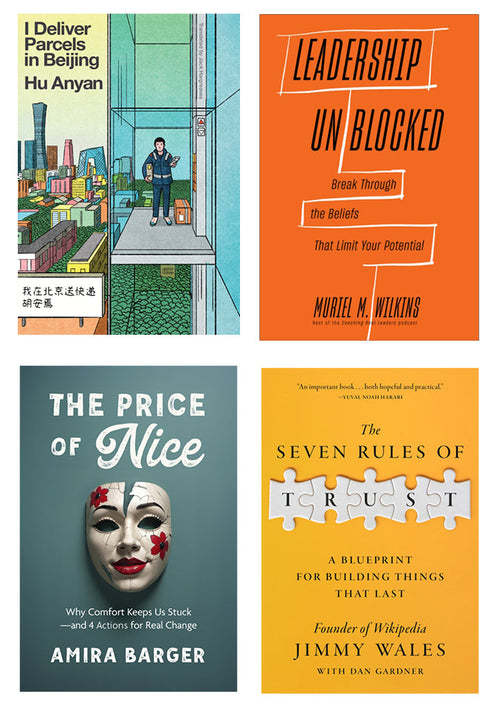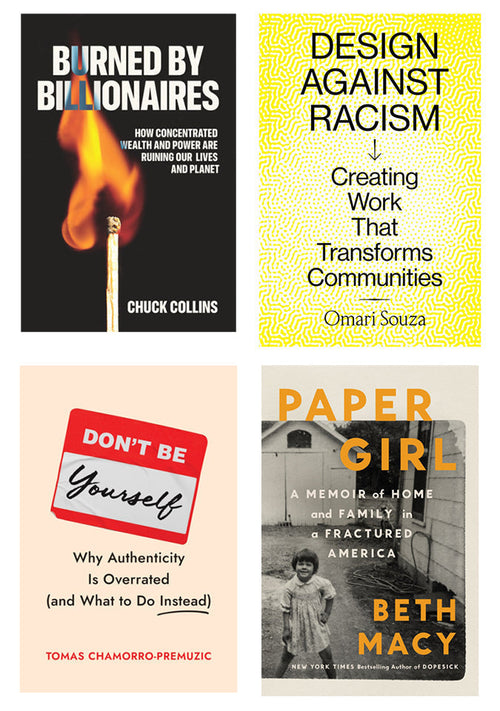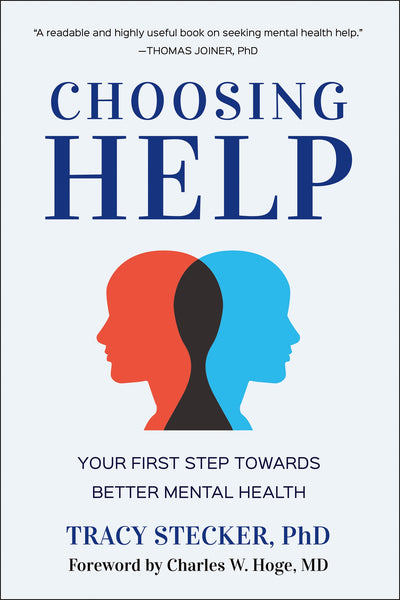Books to Watch | April 14, 2020
Each and every week, our marketing team—Marketing Director Blyth Meier (BRM), Digital Marketing Specialist Gabbi Cisneros (GMC), and Editorial Director Dylan Schleicher (DJJS)—highlights five new books we are most excited about.
This week, our choices are:

The Address Book: What Street Addresses Reveal About Identity, Race, Wealth, and Power by Deirdre Mask, St. Martin’s Press
Today is 4-14, and for Milwaukee, 414 is more than just a date: it's our area code and unofficially a holiday to celebrate our city! This is fitting, since I chose to write about The Address Book because it resurrected my interest in Milwaukee's many neighborhoods (200 neighborhoods in a city less than 100 square miles!) and the history of their names (local historian John Gurda's book Milwaukee: City of Neighborhoods seems like the perfect book to page through on this subject). And since Milwaukee is known as one of the most segregated cities in America, The Address Book's subtitle also hit home, prompting me to consider city maps with a closer magnifying glass, to re-consider the names of streets we walk (and especially those that we're told to avoid) every day.
Mask introduces the book with a New York City street-renaming proposal that spiraled unnecessarily into racism. And this trend continues through various other examples and facts she lays out:
[M]ost households in the world don't have street addresses. Addresses, the UPU [Universal Postal Union] argues, are one of the cheapest ways to lift people out of poverty, facilitating access to credit, voting rights, and worldwide markets.
The table of contents provides a great overview of the global tour you will take in The Address Book. Under the Heading of "Development" are: Chapter 1. Kolkata: How Can Street Addresses Transform the Slums? Chapter 2. Haiti: Could Street Addresses Stop an Epidemic? And then under “Origins” are Rome, London, Vienna, Philadelphia, Korea and Japan. She digs deeper into politics and race, including Chapter 11. St.Louis: What do Martin Luther King Jr. Streets Reveal About Race in America?
Though the book examines addresses across the globe, you will likely find many of the situations apply to your own corner of the world.
Read an excerpt from the book ("Chapter 13. Manhattan: How Much is a Street Name Worth?") here. (GMC)
The Buy Nothing, Get Everything Plan: Discover the Joy of Spending Less, Sharing More, and Living Generously by Liesl Clark & Rebecca Rockefeller, Atria
You can open this book to any page, read a few paragraphs or bullet points, and feel like your life and impact on the planet has been instantly enhanced. Empowering and doable is just the type of advice I need right now. Just a few days ago, I was feeling conflicted about my takeout sushi: So many plastic containers, throw-away chopsticks, forks, and spoons, plastic-wrapped leftovers, condiment packets, napkins, and paper or plastic carryout bags. All the environmentally unfriendly things I had been avoiding by investing in beeswax food wraps, reusable silicone snack bags, and grocery totes (not a paid advertisement, but if you're interested in these things check out Net Zero Company!) had re-infiltrated my life in exchange for supporting local businesses and restaurants. And this is where it becomes clear that creativity really is the best thing to come out of being quarantined. This is where I asked myself: If I can't do fill-in-the-blank, how instead can I make an impact on the planet?
This is where The Buy Nothing, Get Everything Plan provides what authors Liesl Clark and Rebecca Rockefeller describe as "a philosophy that holds that the key to a joyful life of meaning and abundance on a healthy planet is to pursue every possible alternative before buying anything one wants or needs." We're all in strange places mentally right now, despite spending most of our time in one very familiar place: our homes. For me, this lack of change in scenery has made it very clear how much stuff I have, and has kept me from doing much online shopping. And closed libraries means that I'm actually going to be reading the books I already have on my bookshelf. However, the authors also highlight the importance of sharing, which many neighborhoods have embraced during this quarantine as well. See: Little Free Pantries and Free Little Libraries turned into pantries.
The great thing about the Buy Nothing Project is that it's not just a book, it's a growing and active movement with a website! Even when you don't have the physical copy you can open for inspiration on how to use vegetable scraps for veggie broth or coffee grounds as an exfoliator, you can browse their website, join local groups, undertake the challenge of buying nothing for seven days, and more. (GMC)
Dimes Times: Emotional Eating by Alissa Wagner and Sabrina De Sousa, Karma Books
Maybe you moved back home to ride out this storm. Maybe you are working 18-hour days and have no time to even eat, much less figure out the new touchless ordering and pick up routines. Maybe you are trying to stretch your dwindling dollars as long as possible. Whatever the case, we are all missing the comforts of lingering in our favorite restaurants these days. Which is why restaurant-specific cookbooks are a godsend right now. Is the food you are going to make from the recipes exactly like the dish they serve you? Of course not! But if we’ve learned anything from this past month, it’s that close enough is good enough. For residents of the Lower East Side in New York City, the Dimes restaurant has become a neighborhood staple since it opened 2013, later expanding to a larger location and spawning a nearby deli and market. Out today is their first book—a cookbook/children’s book/journal/art project mashup that covers a wide range of favorites from their healthy comfort food menu. Love Toast, Matcha Buttermilk Pancakes, Shrimp + Fonio Grits, Wheatgrass Margarita—this is not your mother’s Moosewood cookbook! (Or maybe it is? Shhhh… don’t tell the youngsters.) “Emotional Eating is a kind of hopeful yearning, a hunger to be with people even on days you can barely get out of bed or barely think straight … This book is an invitation to share the Dimes Times vibe with you, wherever you are so you’re not so alone.”
Already hungry for something? Check out this article with the recipe for Freekeh pilaf with kale, kohlrabi, and wild mushrooms. (BRM)
Think Like a Rocket Scientist: Simple Strategies You Can Use to Make Giant Leaps in Work and Life by Ozan Varol, PublicAffairs
Ozan Varol is a popular professor, author, and podcast host who you may know of as a regular contributor to the Next Big Idea Club. He is also a rocket scientist who has worked directly on quite a few very big ideas, like the NASA missions that would send the Spirit and Opportunity rovers to the surface of Mars, and the Cassini-Huygens mission that sent a probe into orbit around Saturn. But despite his passion for astrophysics, he found himself “far more drawn to the physics of society” and departed for law school. And that combination—a greater understanding of things at a literally cosmic level with an enthusiasm for making the world we live in a better place—might be exactly what we need right now.
His new book, Think Like a Rocket Scientist, is a profoundly practical book, which sounds a little paradoxical. What I mean by it is that it explains all the little things one needs to consider and do in order to accomplish really big things. It is about how to conduct thought experiments and build in redundancy, how to challenge and test our own ideas. It is a book that is, in the end, true to its title in trying to teach us to “think like a rocket scientist.” It will help provide the practical tools needed to launch a rocket, a business, and a life, but also a perspective to view the world and our place in it a little differently (and our place in the cosmos more clearly), inspiring us to change it all for the better along the way.
For further insight into this book: Read this interview between author Nir Eyal and Ozan Varol. (DJJS)
The Year 1000: When Explorers Connected the World—and Globalization Began by Valerie Hansen, Scribner
It was a time when the world was on relatively equal footing technologically, when trade was powered largely by human footing (that is, human feet) carrying goods overland—which they traversed at much greater distances daily than we typically imagine they could today. But it was also a time when humankind unlocked the final secrets of the ocean’s tides necessary to connect the world when the Vikings reached Newfoundland and the Americas. It was that final connection, proposes Valerie Hansen in her new book, The Year 1000, that marks something special about the year.
Hansen explains how sea routes that traveled by ocean current had been established for centuries, and how the well-used route that took ships between the Persian Gulf and China was even twice as long as that eventually travelled by Columbus. In fact, if you account for the full trade route many took, and “add the leg from Basra, in Iraq, to Sofala, Mozambique, the route was three times as long as Columbus’s.” So the world was already largely connected, by sea and by overland routes like the Silk Road. The new idea Hansen is proposing is that the Norse voyages connecting Scandinavia to Newfoundland—the evidence of which, through connecting Norse saga with significant archeological evidence, she argues there is no doubt of—”connected preexisting trade routes on both sides of the Atlantic and so kicked off globalization.”
From there, Hansen takes us on a journey around the world, from “The Pan American-Highways” that connected the various cultures indigenous to the Americas in trade to “The Most Globalized Place of Earth” at the time—China. It is a fascinating saga in its own right, and holds out many lessons about the shape of and our attitude toward globalization today.
Fascinated by the topic? Watch this lecture video of author Valerie Hansen reconstructing the larger historical context of the Library Cave and Thousand Buddha Caves at Mogao, as well as the city of Dunhuang and the surrounding region. (DJJS)
What we're reading away from work:
 "Samantha Irby’s latest book of essays is just the ticket during a global pandemic—short enough stories to hold our whithered attention spans, and funny enough to make us forget even for a moment the topsy turvy-ness of these times. Any book that is literally dedicated to Wellbutrin deserves to be at the top of your TBR stack. —Blyth Meier, Marketing Director
"Samantha Irby’s latest book of essays is just the ticket during a global pandemic—short enough stories to hold our whithered attention spans, and funny enough to make us forget even for a moment the topsy turvy-ness of these times. Any book that is literally dedicated to Wellbutrin deserves to be at the top of your TBR stack. —Blyth Meier, Marketing Director
















































